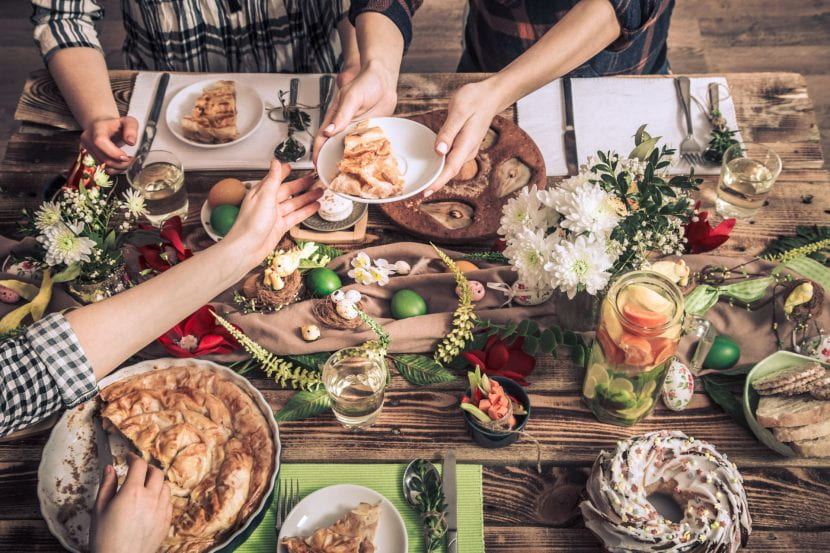Food and cooking are a big part of the holidays for many. The last thing anyone wants is people getting sick during that time, especially from holiday meals. We can prevent foodborne illness by practicing food safety in our home kitchens. Here’s some food safety tips to keep you and your family healthy and safe this holiday season.
Temperature
- It’s important to defrost meats and frozen foods at the correct temperature, to prevent the food from being in the danger zone (41 degrees-135 degrees) for too long. The only places you should defrost food is in the refrigerator, a cool water bath (with water that is replaced every 30 minutes), or in the microwave if you are going to cook it immediately.
- All foods have a minimum cooking temperature that destroys the bacteria in the food, get an instant read food thermometer to make sure your food reaches that temperature for the safety of you, your family and guests. See the holiday helper for internal cooking temperature of common holiday foods. https://www.eatright.org/-/media/homefoodsafety/multimedia/downloads/holidayhelpertipsheet.pdf?la=en&hash=7DCF93192F9CFF6703D8D01A2AFB4F1C52B19733&hash=7DCF93192F9CFF6703D8D01A2AFB4F1C52B19733
- Be sure not to eat raw doughs or batters, since they can contain bacteria from raw eggs or flour that will be destroyed in the cooking process. It’s important to follow cooking directions for any ready- to- cook items.
Cleanliness
- Hand washing is a great way to prevent any potential food safety issues, it’s important to wash your hands before preparing food, when switching tasks in the kitchen, and when doing any task outside of the kitchen before returning (using the bathroom, touching a pet, blowing your nose). Proper handwashing uses soap and running water for a minimum of 20 seconds.
- You can prevent food safety concerns by making sure you are using different cutting boards for fresh produce and non-cooked foods, and for raw meat, poultry and seafood.
- It’s important to wash produce your using before cooking or serving it to remove any dirt or surface bacteria. Wash it under running water and gently rub it in your hands, use a vegetable brush for firm produce like potatoes or carrots.
Serving Food
- If your holidays include buffet style meals, don’t let any food sit out at room temperature for more than two hours, at that point the food should be discarded.
- Put smaller portions of dishes out if they won’t be eaten within the two-hour window.
- Replace buffet or appetizer dishes with new dishes instead of refilling old ones. This prevents the spread of bacteria from people’s hands or utensils they use for taking food.
Storing Food
- It’s important to cool your leftovers quickly to prevent time the food is spent in the danger zone (temperature range where bacteria grow quickly). Food can be cooled faster by using shallow Tupperware containers and splitting up larger portions of food into smaller portions.
- It’s important to put leftovers in the refrigerator as soon as you arrive home or keep them cool while you travel by using a cooler.
- Leftovers should be kept in airtight containers to prevent leaks, picking up odors from other foods, maintain moisture, and prevent bacteria from getting into the food.
- Leftovers can be kept for 3-4 days in the refrigerator and 3-4 months frozen. Frozen foods can be kept longer than 4 months, however taste and texture may be altered.
Reheating Food
- When leftovers are reheated, they need to reach 165 degrees, this can be done with a stove top, oven, or microwave. Be sure to use a food thermometer to check the temperature of the reheated food. If using a microwave check the temperature in different parts of the food since microwaves can sometimes heat food unevenly.
These tips will help keep you and your family safe from foodborne illness this holiday season.
See additional resources from the CDC and the USDA Food Safety Inspection Service for additional food safety information.
Resources:
- https://www.fsis.usda.gov/food-safety/safe-food-handling-and-preparation/food-safety-basics/leftovers-and-food-safety#:~:text=Cover%20leftovers%2C%20wrap%20them%20in,wrapped%20leftovers%20for%20rapid%20cooling.
- https://www.fsis.usda.gov/food-safety/safe-food-handling-and-preparation/food-safety-basics/cutting-boards
- https://www.cdc.gov/foodsafety/
- https://www.fda.gov/food/buy-store-serve-safe-food/serving-safe-buffets

